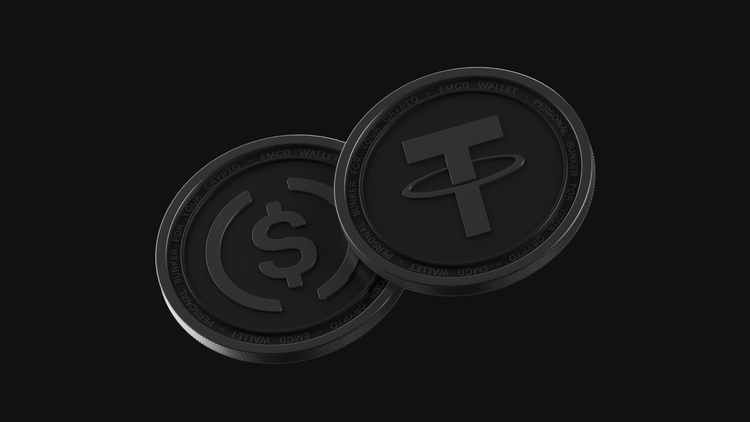Where to Invest Money: The Best Investment Options

Investing money means making it work for you. If you just keep it under a pillow or on a debit card, it will lose value over time due to inflation. Most likely, you want to earn extra income and protect your savings from losing purchasing power. That’s why it’s important not to hold everything in cash, but instead to put it to work by choosing suitable investment tools.
Each option has pros and cons, and the choice depends on your goals, amount, time horizon, and risk tolerance. Below, we’ll review the main options — from safe bank deposits to risky startups — and explain where to invest money for maximum benefit.
Bank Deposits: Reliability and Minimal Risk
A bank deposit is the simplest and most straightforward way to preserve savings. You open a deposit account, put money into it at a fixed rate, and at the end of the term you withdraw your funds with interest.
The income is modest, since deposit rates are usually lower than inflation or stock market returns. But the reliability is very high: deposits are insured by the state up to 1.4 million rubles. Even if the bank loses its license, you’ll get your money back through the Deposit Insurance Agency — usually within two weeks, though sometimes there are delays.
The main rule: don’t keep more than 1.4 million in one bank; split your savings across several banks so all deposits are protected.
Deposits are great for conservative investors and for building a ‘safety cushion’. They generate modest but stable returns. However, you won’t get rich on deposits — their goal is preservation, not growth. If you want your capital to grow faster, explore other investment options as well.
Real Estate: Passive Income and Capital Growth
An apartment or house is a tangible asset you can live in or rent out for passive income. Real estate is attractive because property usually appreciates over time, and rental yields in large cities are around 4–6% annually. In some regions, it can be higher (7–8%) or lower (3–4%). That’s better than deposits, but it involves more effort.
The entry barrier is high: you need a large sum or a mortgage loan. Rent doesn’t always cover mortgage payments, and liquidity is low — it’s hard to sell quickly at a good price, especially during a downturn.
In 2023–2024, housing prices rose sharply due to subsidized mortgages, but now demand is falling and the market is overheated. Quick profits from resale are unlikely.
Still, real estate remains a reliable long-term asset. It suits investors with significant capital and a long horizon. But don’t forget extra costs: taxes, maintenance, vacancies. Net income may be lower than expected. And never put your last money into real estate — keep a reserve for emergencies.
Stock Market: Shares, Bonds, and Index Funds
The stock market allows you to buy a stake in a business (shares) or lend money to the state or companies (bonds).
- Shares make you a co-owner of a company. You profit if the share price rises and may also receive dividends
- Bonds are debt instruments. You lend money under a fixed rate (coupon) and receive regular payments plus the principal at maturity
To access the exchange, you need a brokerage account — easy to open online in minutes. Through a broker you can buy Russian shares, government bonds, and more.
Investing here works best long term. Historically, stocks bring higher returns than deposits, but their prices fluctuate. Be ready for ups and downs — it’s normal. Beginners should avoid speculation and instead pick solid companies or index funds.
Always diversify (different industries, issuers) and remember: neither shares nor bonds guarantee profit. But a balanced portfolio usually outpaces inflation and grows well over several years.
Mutual Funds: Simplicity and Low Entry
A mutual fund lets you invest in a ready-made portfolio of stocks or bonds managed by professionals. You buy a ‘unit’ of the fund, which represents a share of that portfolio.
Advantages: simplicity, diversification, and a very low entry threshold — you can start with just a few thousand rubles. Many banks sell fund units online via mobile apps.
Mutual funds are especially useful for beginners who want market exposure without deep analysis. Risks still exist (units fall when the market falls), and management fees apply. But overall, it’s one of the simplest and most accessible tools for starting.
ETFs: A Broad Market in One Instrument
An ETF (Exchange-Traded Fund) trades on an exchange like a stock. It usually tracks an index or a basket of assets. For example, buying one ETF share can give you exposure to dozens of companies at once.
To buy ETFs, you need a brokerage account. The minimum entry is the cost of one ETF share, which can range from a few hundred to a few thousand rubles.
Like mutual funds, ETFs give beginners diversification without complex research. They also carry market risks and a small fee, but overall ETFs are a convenient way to invest in markets or industries with minimal effort.
Cryptocurrency: High Returns and High Risks
Cryptocurrencies (like Bitcoin) attract with potentially high returns but are also the riskiest and most volatile assets. Prices can jump or crash by tens of percent in days. You can get rich quickly — or lose everything just as fast.
The crypto market is still only partially regulated. Since 2025, some rules have appeared (Bitcoin ETFs in the US, MiCA regulation in the EU), but there’s no government insurance or guarantees.
It’s worth investing only a small portion of your capital that you can afford to lose. Start with the most well-known coins (e.g., Bitcoin) and study exchanges and secure storage. In general, beginners should first master classic instruments before venturing into crypto. Remember: high returns always come with high risks.
Gold and Precious Metals
Gold and other metals (silver, platinum) have long been a store of wealth. Prices often rise during crises, so gold is considered a safe haven. But not always: for example, in 2008, gold prices initially fell before rebounding.
You can invest by buying physical gold (coins, bars), opening a metal account in a bank, or purchasing ETFs/mutual funds tied to gold.
Returns are modest — gold doesn’t pay dividends or interest. But it can grow significantly in troubled times, offsetting losses elsewhere. Experts recommend keeping 5–15% of capital in metals for diversification. Think of gold not as a way to get rich, but as insurance for the long term.
P2P Lending: An Alternative to Banks
P2P lending (crowdlending) means private investors lend money directly to individuals or businesses through online platforms. You become a ‘mini-bank’, earning interest.
Potential returns can be high — 15–25% annually is often advertised. In reality, with defaults, net returns are closer to 5–15%. The risk is high: borrowers may not repay, and there’s no insurance.
If you try P2P, invest small amounts and spread them across many loans to reduce risks. In Russia, this sector is still young, with only a few licensed platforms. P2P suits experienced investors ready for high risk in exchange for higher yields. Beginners should look elsewhere first.
Business and Startups
Instead of investing in others’ assets, you can put money into your own business or someone else’s project.
- Own business: You control everything, and profits can be huge. But entrepreneurship requires enormous effort and carries big risks — many businesses fail before turning a profit
- Startups: By buying a stake in a new or existing business, you might gain massive returns if it succeeds. But the failure rate is high, and most startups lose investors’ money
Such investments suit experienced investors willing to risk significant sums for high potential returns. Never invest your last money here — the chance of losing it is very high.
Diversification: How to Spread Risks
The golden rule: don’t put all your eggs in one basket. Diversification means spreading money across different assets to reduce risks. If one drops, another might rise.
Combine tools: some money in deposits or bonds (safety), some in stocks (growth), some in protective assets like gold or foreign currency. Diversify within classes too: buy stocks from different industries, keep deposits in multiple banks, etc.
The right mix depends on your goals and risk appetite. But a diversified portfolio makes results more stable and lets you sleep peacefully. It doesn’t guarantee profit, but it protects against major losses.
Common Mistakes of Beginners and Why Education Matters
New investors often make typical mistakes. Here are the most common and how to avoid them:
- Chasing high returns without understanding risks. Huge promised profits usually mean huge risks — or scams
- No goal or plan. Always define why and for how long you’re investing
- No diversification. Putting everything into one stock or coin can wipe you out
- Investing borrowed money. Never invest with credit — it can leave you with losses and debt
- Emotional decisions. Panic selling or euphoric buying leads to regret. Stick to your plan
- Lack of knowledge. Don’t invest in what you don’t understand. Learn, take courses, read, ask questions. Education is the best protection
Investing isn’t a game — it’s a way to secure your future.
FAQ
Where to invest a small amount of money?
Deposits or inexpensive fund units (ETF/mutual fund). With small capital, complex tools don’t fit. 5–10% per year is already good.
What investments suit beginners?
Deposits, bonds, ETFs/mutual funds — minimal risk and simplicity. Trading and crypto are better later.
Where to invest without risk?
Absolute safety doesn’t exist, but the most reliable are deposits up to 1.4 million ₽ and government bonds. Gold serves more as protection than income.
Is it worth investing in real estate now?
It’s reliable, but not fast. Prices grow slowly, mortgages are expensive. Not great for resale, but fine for long-term rentals.
Which to choose: stocks or crypto?
Stocks are more predictable and reliable. Crypto can be tried only with small sums you’re ready to lose.
How much can you earn on investments?
Deposits/bonds: 5–10% annually. Stock market long term: 10–15%. Aggressive bets may yield more, but risks are huge.
What’s the minimum horizon for investments?
At least 3–5 years, preferably longer. Risky assets aren’t for the short term.




